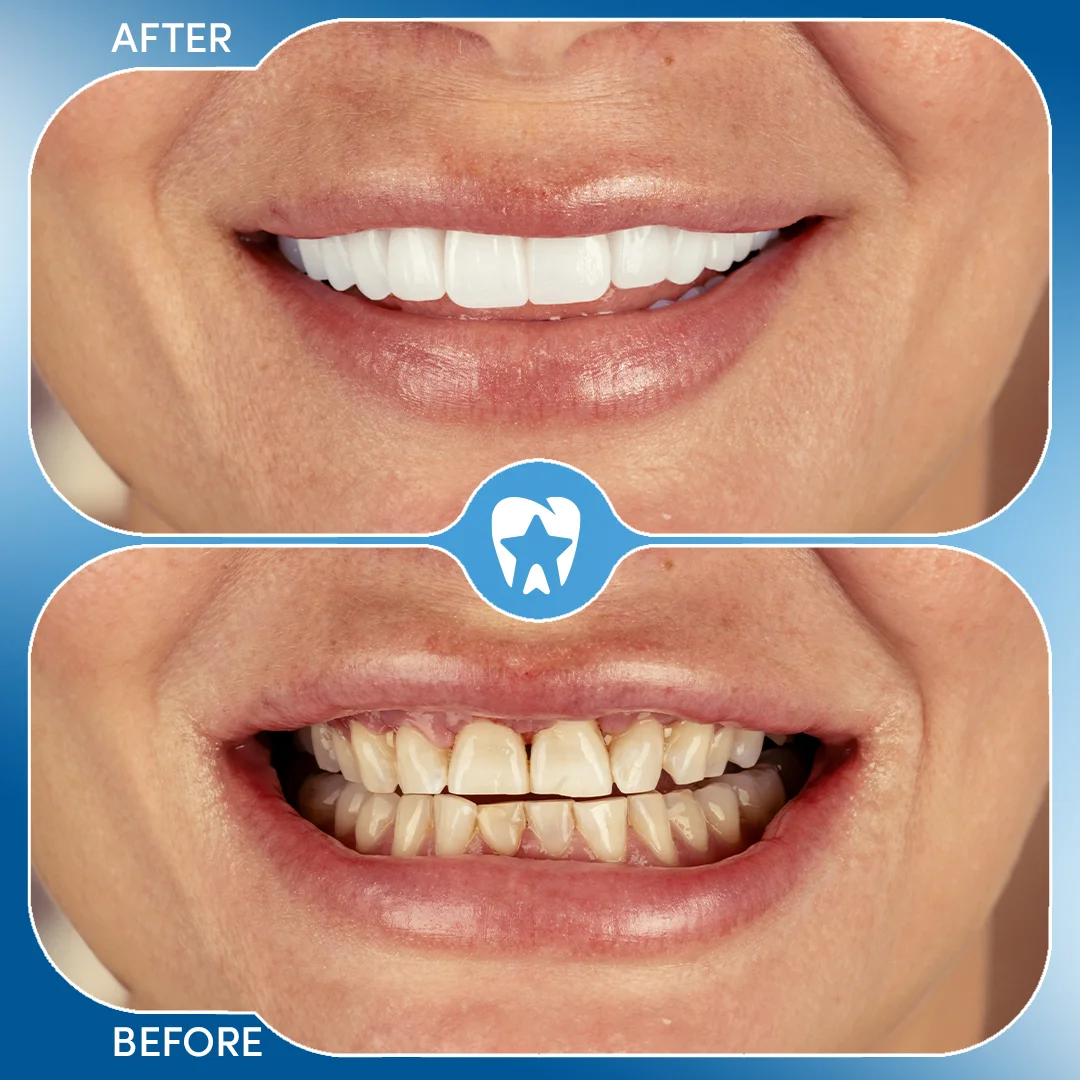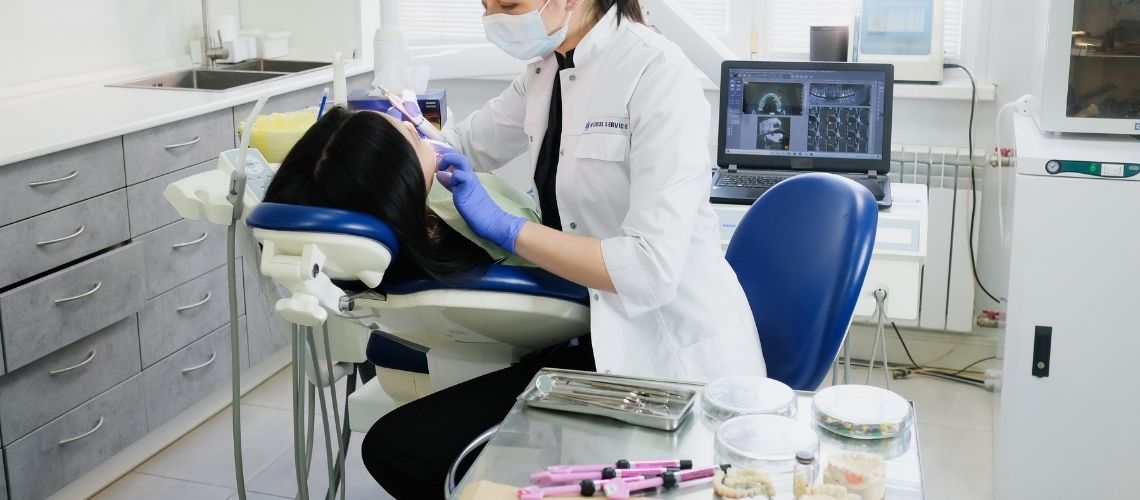In modern dentistry, bone augmentation is a crucial procedure. Especially in Turkey, this method has proven to be effective. Many patients with insufficient bone mass in the jaw seek help there. Both natural and synthetic materials are used to strengthen the bone structure for dental implants. The advanced techniques and qualified professionals in Turkey offer optimal conditions, ensuring a successful procedure. This makes the country a preferred destination for such dental treatments.
What is Bone Augmentation?
Bone augmentation, also known as bone grafting, is a surgical procedure primarily performed when the bone mass in the jaw is insufficient for dental implants. In modern dentistry, doctors have developed the ability to generate bone where it is needed. This procedure is particularly used when the bone is too thin or too soft to securely anchor an implant. Through bone augmentation, the bone is strengthened to integrate with the dental implant and hold it securely.
- Strengthening the bone allows for successful fusion with the implant.
- This significantly reduces the risk of implant failure.
Placing a dental implant in an area with insufficient bone structure increases the likelihood of failure. Thanks to advanced techniques and qualified professionals, bone augmentation in Turkey has become a reliable option for many patients worldwide.
Before & After Photos
Experience the impressive transformations of our happy patients.
Reasons for Bone Augmentation in Turkey
The primary reason for the need for bone augmentation is bone loss, which can be caused by various factors. A critical factor is the loss of teeth. Missing teeth lead to a reduction in the jawbone substance due to the lack of natural stimulation from chewing. Additionally, within a year of losing a tooth, up to a quarter of the bone can be lost. Early placement of dental implants is recommended to prevent this loss. Other, less common causes of bone loss include:
- Misalignment of teeth
- Gum disease
- Infections
- Tumors in the facial area
These reasons make bone augmentation a necessary measure for many patients. In Turkey, they find optimal conditions for such procedures due to advanced techniques and qualified professionals.
What to Expect from Bone Augmentation in Turkey
A bone augmentation procedure in Turkey typically takes less than 30 minutes. However, the stay in the practice can last between 1.5 and 2 hours. This includes consultation, the procedure itself, and the recovery phase on-site. Patients should prepare at home before the appointment, including:
- Not eating or drinking anything for at least 8 hours before the procedure, including mints or chewing gum.
- Ensuring a companion is present during the procedure and for transport home afterward.
- Wearing glasses instead of contact lenses and a short-sleeved shirt.
Patient documents can be completed online. If paperwork is completed beforehand, arriving 5 to 10 minutes before the appointment is sufficient. Otherwise, patients should arrive 20 minutes earlier to complete the paperwork in the practice. In the practice:
- Minors must be accompanied by a guardian who signs the consent forms.
- Existing X-rays can be presented or taken in the practice if needed.
Before the procedure, a dental assistant will discuss the patient’s medical history. The treating doctor will address final questions and concerns. For medication concerns, patients should call before the procedure so the practice team can contact the treating doctor.
Get free offer for Bone Augmentation in Turkey
Tips for a Quick Recovery after Bone Augmentation
After the bone augmentation procedure in Turkey, a critical recovery phase begins. The patient is first taken to a state-of-the-art recovery room equipped with advanced monitoring technology to ensure safety. A nurse will monitor the condition and explain the recovery guidelines to the patient and their escort. Before leaving the clinic, the patient receives written instructions for home care.
Once home, the patient should rest and take pain medication promptly before the anesthesia wears off. A recovery kit containing extra gauze and gloves for possible bleeding is provided. A mild to strong tingling in the lip, chin, and tongue is normal and temporary.
- The patient should take the day of the procedure and the following day off. Additional days off may be considered depending on how the patient feels.
- Applying ice to the affected area can help reduce swelling.
- A recovery kit provided to the patient contains important items for aftercare.
During the healing phase of the bone augmentation site, regular follow-up appointments with the oral surgeon are scheduled to monitor the healing process. Once fully healed, the appointment for placing the dental implant is set. As a token of care, each patient receives a cup of gourmet ice cream at the end of the treatment.
How Much Does Bone Augmentation Cost in Turkey?
At Hollywood Dental Clinic, the cost of bone augmentation in Turkey varies depending on the complexity of the procedure, the materials used, and your individual needs. Please inquire directly for detailed pricing. Check our price page for more details.
Take 360 Tour of Our Clinic
FAQ
What are the disadvantages of a dental bridge?
Using dental bridges to replace missing teeth has certain disadvantages. First, adjacent healthy teeth must be filed down for crowns, which can weaken their structure. Additionally, bridges do not protect against bone loss, as they do
not stimulate the jawbone like implants do. This can lead to changes in facial profile over time. Cleaning under the bridge can also be challenging, increasing the risk of cavities and gum disease. Furthermore, the lifespan of a bridge can be limited by wear and tear or damage to the abutment teeth. Bridges often need to be replaced after 10 to 15 years, requiring long-term consideration regarding maintenance and potential replacement.
How long does a bridge last in the mouth?
The lifespan of a dental bridge varies depending on the type of bridge and the materials used. Traditionally fabricated bridges have a lifespan of 5 to 15 years. However, with proper care, this period can be significantly extended. Implant-supported bridges often offer longer durability due to their construction, sometimes lasting over 15 years. The patient’s oral hygiene plays a crucial role in the lifespan of the bridge. Daily brushing and flossing are essential to protect the bridge’s structure. Regular dental visits for check-ups and professional cleanings also contribute to ensuring the maximum lifespan of a dental bridge.
How many teeth can a bridge replace?
A dental bridge can typically replace one to four missing teeth. In some cases, extensions up to six teeth are possible. The location of the gaps and the condition of the adjacent teeth play a crucial role. The specific structure of the adjacent teeth supports the bridge. Additionally, the type of bridge affects the maximum number of teeth that can be replaced. Therefore, choosing the type of bridge is crucial for its load-bearing capacity. The individual needs of the patient are also critical. Therefore, consulting with a dentist is essential to determine the optimal solution.
What is better, a bridge or an implant?
The choice between a dental bridge and an implant depends significantly on personal preferences and health conditions. Implants offer the advantage of being very durable and closely mimicking the natural appearance of teeth. They also promote jawbone health by preventing bone loss. However, they require a surgical procedure, which may not be suitable for all patients. Bridges, on the other hand, are less invasive and provide a cost-effective solution for immediate tooth replacement. They may need to be replaced over time since they do not protect the jawbone as implants do. Therefore, the decision should be made after thorough consultation with a dentist. Ultimately, the decision should be based on the individual health circumstances and financial capabilities.
Can you eat everything with a bridge?
With a dental bridge, you can eat most foods. Initially, it is advisable to prefer softer foods. Gradually, harder foods can be introduced into the diet. However, very sticky or hard foods should be avoided, as they could damage the bridge. Examples of problematic foods include caramel or nuts. With proper care, a dental bridge functions like natural teeth, allowing for a varied diet.
How long does it take to file teeth for a bridge?
Filing teeth for a bridge typically takes one to two hours per tooth. The dentist reshapes the affected teeth during this process. The time required also depends on the number of teeth being worked on and the complexity of the specific case. Therefore, the total duration may vary. The condition of the teeth can also affect the time needed. Despite these variables, the average time per tooth remains relatively constant. Patients should plan an appropriate amount of time to ensure optimal results.
How long does it take from tooth extraction to a bridge?
After a tooth extraction, dentists usually recommend a waiting period of four to six weeks. This allows the gum to heal sufficiently and the bone to stabilize. In the case of uncomplicated healing and replacing only one tooth, this process can be accelerated. However, it is crucial to consider the individual healing process. The dentist assesses each patient’s specific situation and determines the optimal time for placing the bridge based on clinical development after the extraction.

Dentist Handan Nohutcuoğlu graduated from Ege University Faculty of Dentistry in 1987. He has gained experience in various fields by working in many dental polyclinics throughout his career, combining his knowledge and experience. He continues to work at Hollywood Dental at the moment.






















